Insta360 X4 Air vs Insta360 X5: I’ve used both and one makes a lot more sense for most people
Two 8K cameras, one clear winner
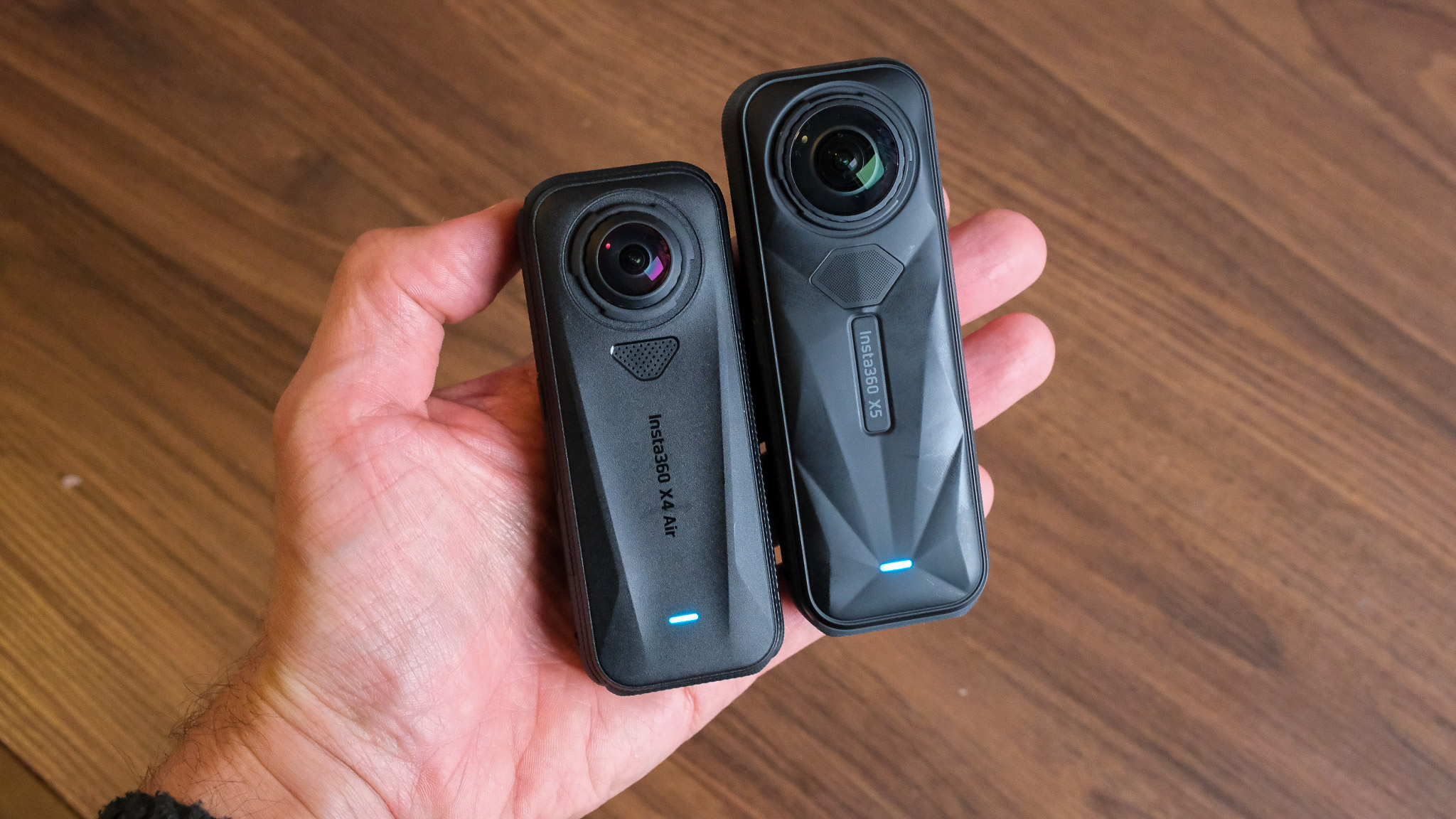

Insta360’s latest 8K cameras prove how far 360 video has come. The X4 Air and X5 share the same creative DNA, capturing immersive 8K 360 footage you can later reframe for cinematic or social clips, but they cater to different types of creators.
The newer Insta360 X4 Air is the lighter, smaller, more affordable model aimed at adventurers who want an easy pocket-sized action camera.
The Insta360 X5 is the flagship: heavier, tougher and equipped with larger sensors for sharper image quality and better low-light performance.
Both shoot 8K at 30fps and use the same intuitive Insta360 app for reframing, horizon levelling and editing. However, the differences in weight, build, and image sensors shift their personalities entirely. Here's how they compare.
Insta360 X4 Air vs Insta360 X5
Price and availability
There’s a noticeable gap in price between these two. The X4 Air retails for around £359 in the UK, $399 in the US, €419 in Europe and roughly AU$649 in Australia, positioning it as the accessible entry point into 8K 360 capture.
The X5 doubles down on performance and price, coming in at around £519 / $549 / €589 / AU$849 depending on the market. That extra spend buys you larger sensors, more advanced processing and a tougher, modular build.
Both are widely available through Insta360’s store and retail partners, with similar bundle configurations. While the X5’s premium reflects its pro credentials, the X4 Air’s lower cost makes it an easier recommendation for anyone wanting flagship performance without flagship pricing.
Get all the latest news, reviews, deals and buying guides on gorgeous tech, home and active products from the T3 experts
If your goal is versatility and value, the X4 Air delivers far more than its price suggests. But for serious creators who see their camera as a long-term investment, the X5’s higher ceiling will pay dividends.
Winner: Insta360 X4 Air – the whole point of the camera is to offer 8K, 360-degree video capability for less money.
Design and build quality
The Insta360 X4 Air puts usability first. At 165 g, it’s the lightest 8K 360 camera Insta360 has ever made, and it feels it, thanks to its compact, curved and easy-to-grip edges even without accessories.
The 2" touchscreen sits flush against the vertical body and is bright, sharp and responsive, making it easy to frame or switch shooting modes on the fly. A single record button and a streamlined two-button layout keep operation simple, while the textured finish improves grip for handheld use.
The replaceable lens covers ensure the X4 Air isn't rendered unusable if the cover cracks. You need the X4 Air Replacement Lens Kit to remove the lens, though.
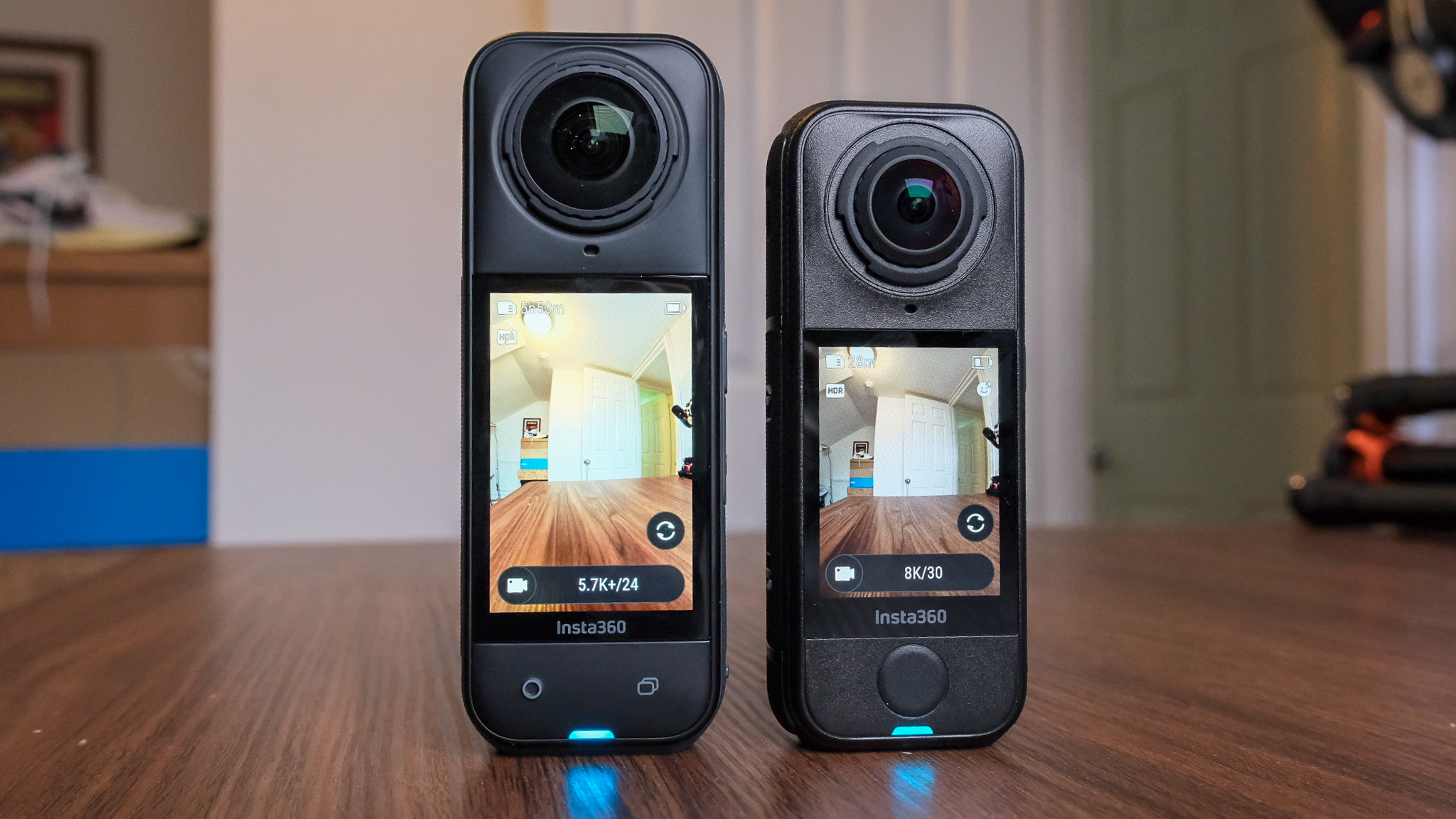
The dual microphones are positioned to reduce wind noise and capture immersive spatial audio, while still allowing the use of external mics for creators who want professional sound. Everything about the design encourages everyday use: minimal fuss, maximum function.
The X5 feels more like a precision instrument without disrupting the classic Insta360. It’s heavier at 200 g, with a more angular, reinforced chassis that communicates durability. The 2.5" touchscreen is larger and higher resolution, offering more real estate for settings and playback.
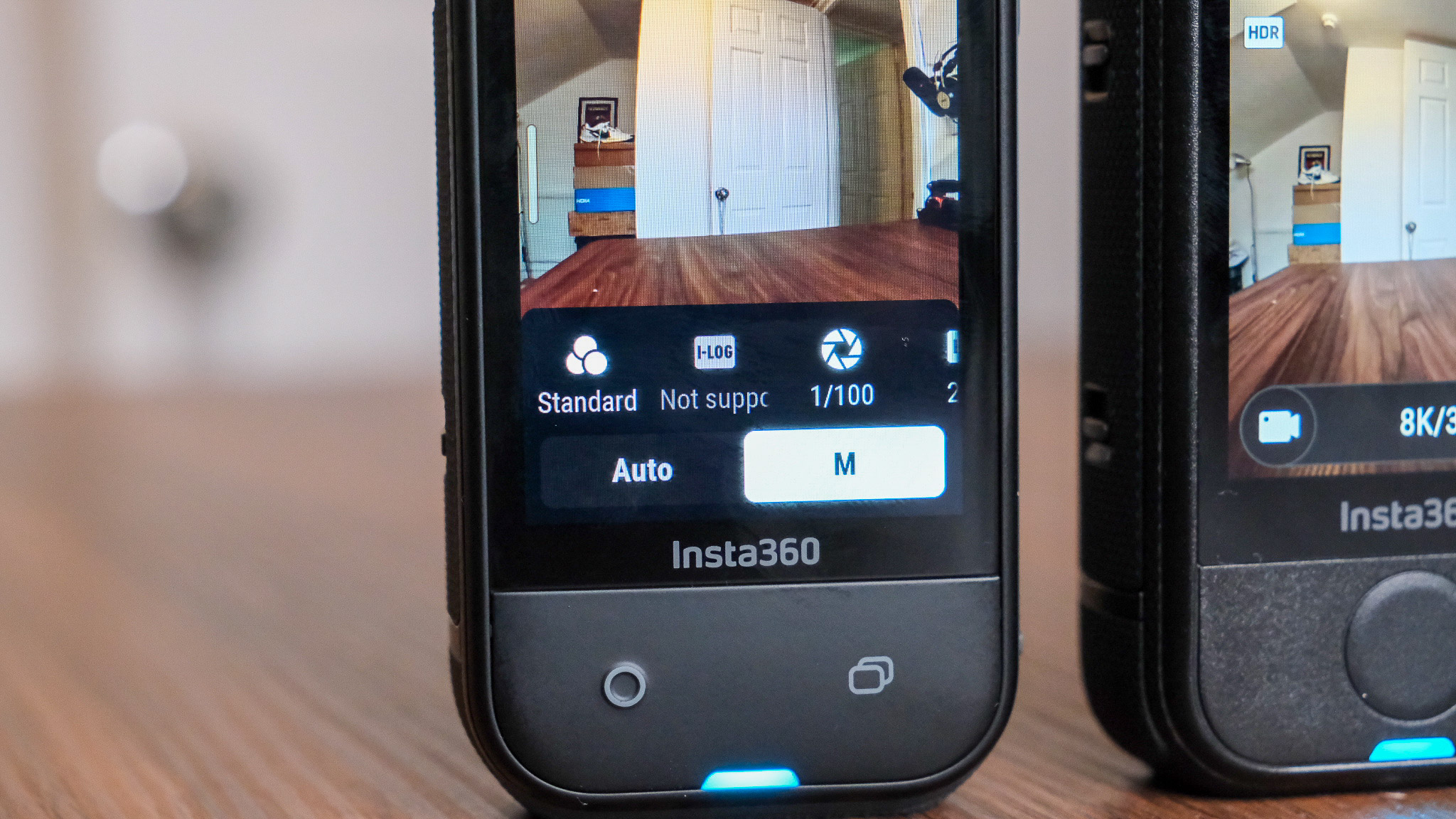
Button placement is similarly intuitive, with two buttons under the screen instead of one, allowing more customisation for pros. Its modular lens housings can be swapped quickly if scratched or replaced with specialised covers, extending the camera’s lifespan and versatility.
Similarly to the X4 Air, you need the specialised X5 Replacement Lens Kit to swap out broken/used lenses.
Four microphones ring the body to create a richer soundstage, especially useful when recording ambient or dialogue-heavy content.
Both share Insta360’s elegant vertical form and excellent build quality, but the experience diverges sharply. The X4 Air feels like a companion you can toss into a pocket, while the X5 feels like substantial, confident equipment, designed for long-term creative work.
Winner: Insta360 X5 – better screen, sturdier chassis, and a more professional control layout.
Features
Both the Insta360 X4 Air and X5 offer creative shooting options, but they’re designed for different types of creators. The X4 Air focuses on simplicity and speed; the X5 leans into flexibility, higher frame rates and pro-level customisation.
Resolution and frame rates
The X4 Air records 360° footage in 8K (7680 × 3840) at 30, 25 or 24 fps, with extra modes for 6K @ 30 fps and 5.7K @ 60 fps. In single-lens mode, it shoots 4K @ 60 fps or 3K @ 100 fps for smooth slow motion. For most users, that’s a superb balance of resolution and flexibility, especially considering its smaller form factor.
The X5 matches that 8K headline spec but adds more creative headroom with 5.7K+ @ 60 fps, 4K @ 120 fps, and higher-bitrate recording for superior clarity during fast motion.
The added power comes from Insta360’s new Triple AI Chip architecture, which handles real-time image analysis, stabilisation and colour processing with more precision than previous generations. It’s what enables the X5’s sharper HDR, faster tracking and better motion handling across all frame rates.
Shooting modes and customisation
Both cameras include all of Insta360’s staple modes, including 360 capture, single-lens mode, Me Mode (for self-facing shots with the invisible selfie stick effect), HDR video, timelapse, TimeShift hyperlapse, and Bullet Time for ultra-slow 360 panoramas.
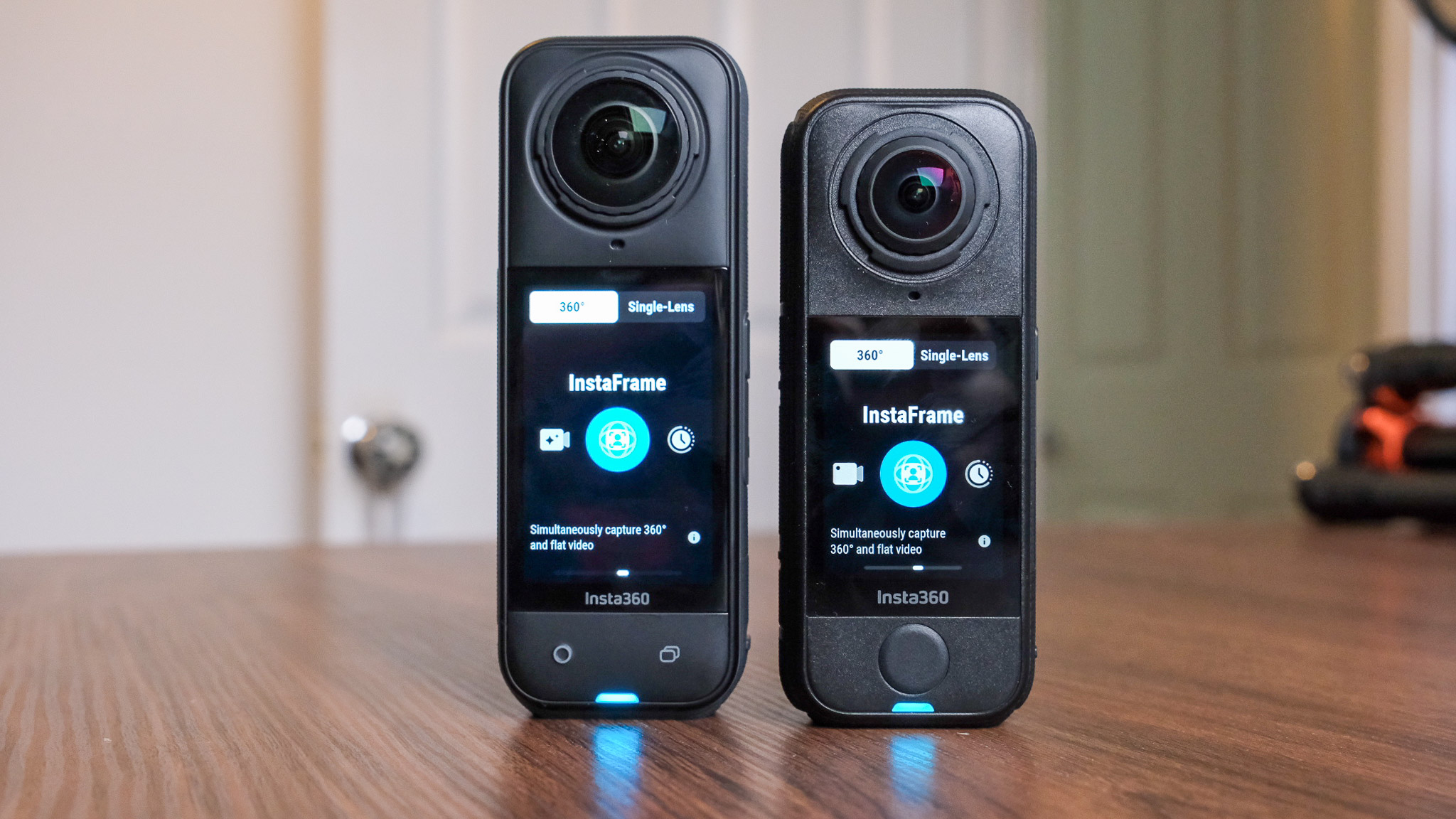
Where the two diverge is in control depth. The X4 Air keeps things streamlined with intuitive menus and quick toggles for automatic exposure, colour and stabilisation. It’s a true “point-and-create” device.
The X5, however, opens the door for professionals to fine-tune ISO, shutter, white balance and exposure value. You can also shoot in H-Log, which lets you play around with the footage later in post-production.
Accessory compatibility
Both cameras work with Insta360’s modular accessories and a broad range of third-party gadgets, including external Bluetooth microphones, headphones and professional audio gear.
Winner: Insta360 X5 – it delivers more control, faster frame rates and better accessory integration while keeping all the creative modes that make Insta360 cameras fun to use.
Video and photo performance
The X5 is the stronger all-round performer, especially when conditions get tricky. Its larger 1/1.28-inch sensors deliver visibly cleaner footage with deeper contrast and smoother gradients, particularly in low light or mixed lighting.
Shadows retain detail, highlights don’t blow out as easily, and stabilisation stays rock-solid even during aggressive panning or fast movement.
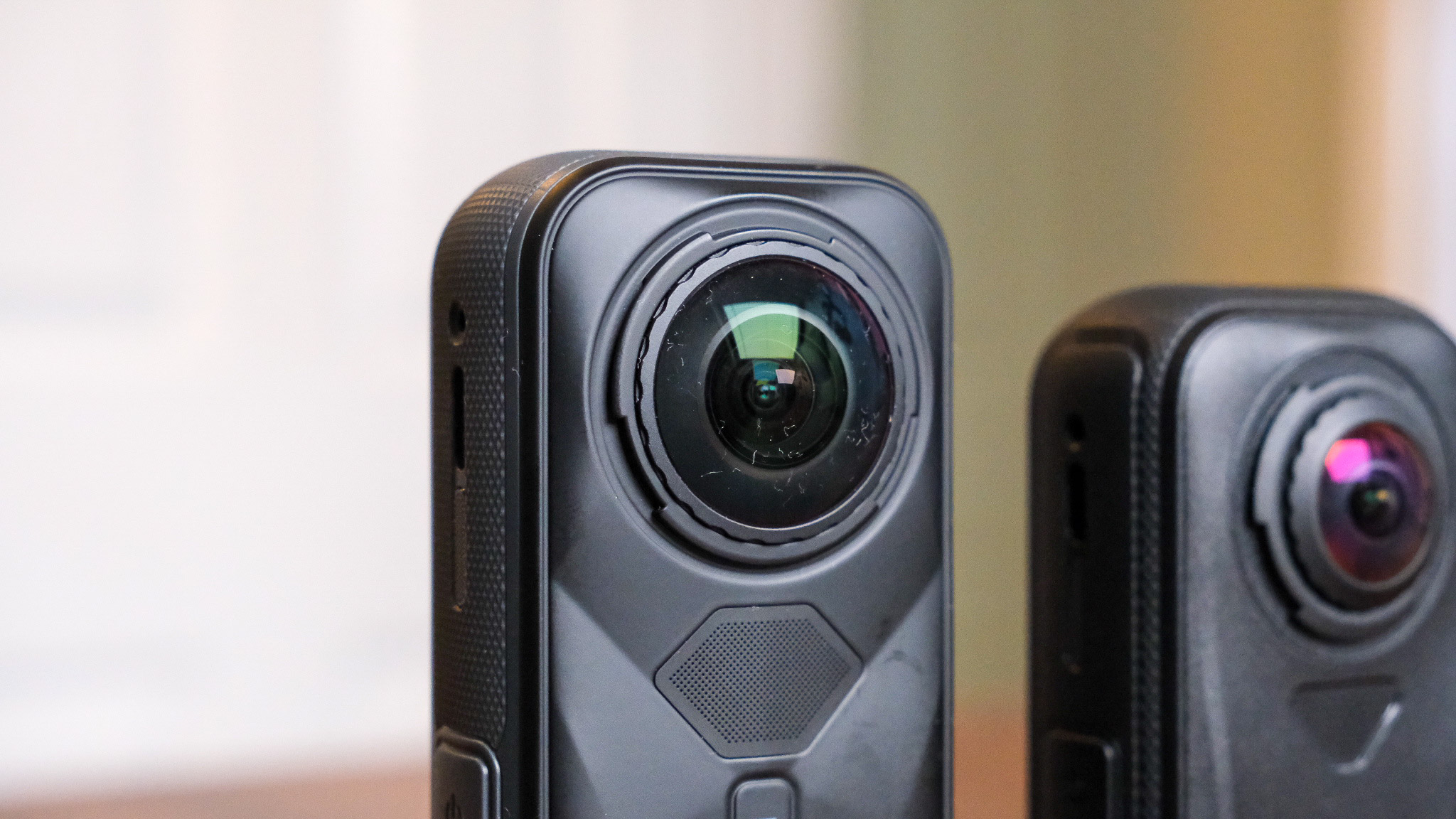
The X5 has a larger lens unit and sensor
In footage comparisons, colours from the X5 appear more cinematic and refined, with a slightly warmer tone that gives 8K clips more depth.
The extra processing power translates into better texture handling: tree leaves, hair and water movement all look more natural, even after reframing.
The X4 Air punches well above its weight for such a compact camera. Its dual 1/1.8-inch sensors and bright f/1.95 lens produce crisp, well-balanced 8K footage in daylight, with Insta360’s trademark FlowState stabilisation keeping everything smooth even during running or cycling shots.
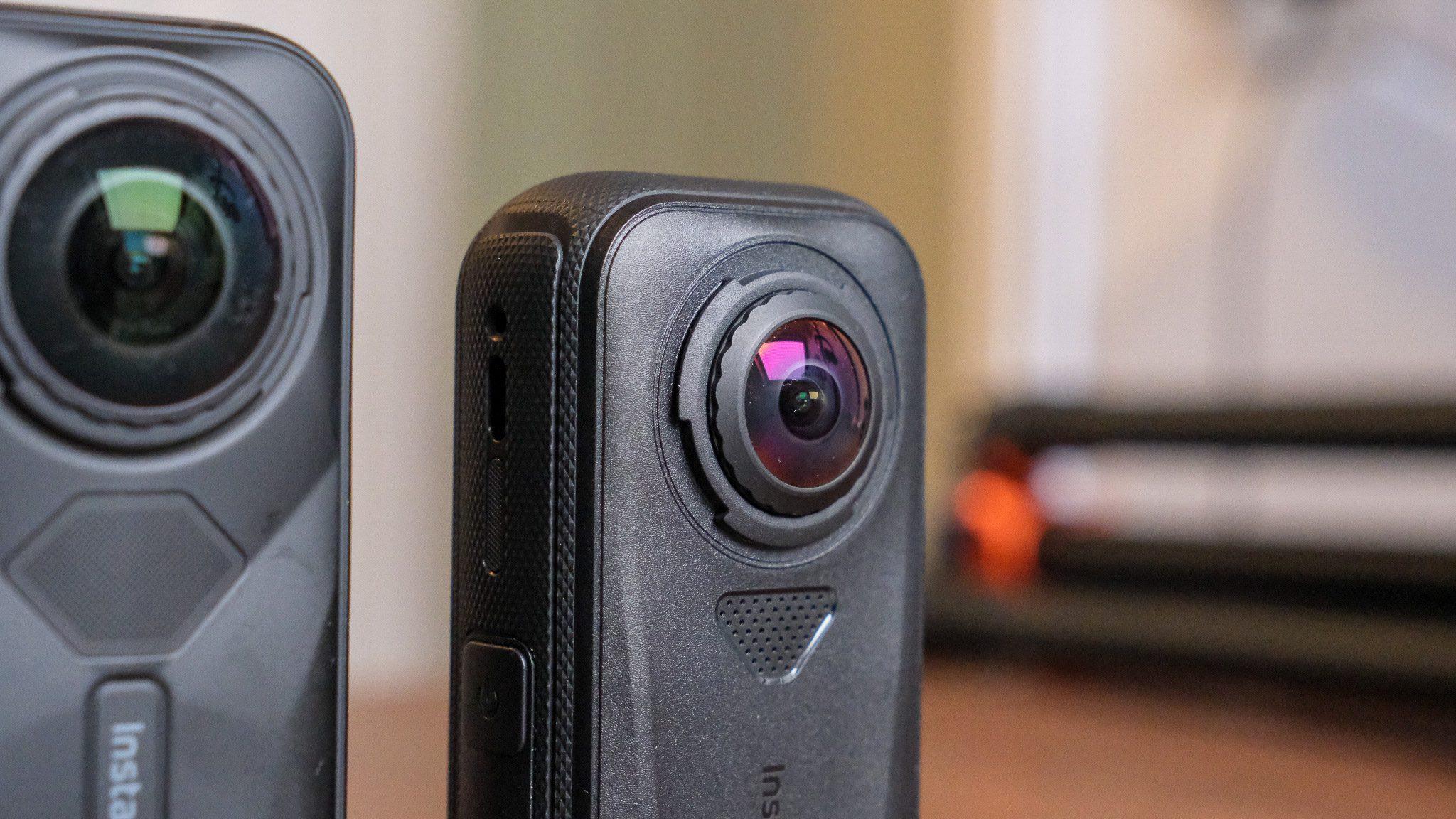
The X4 focuses on easy-of-use
The built-in wind guard and improved audio processing make a noticeable difference in real-world use, especially when shooting outdoors.
While it can’t quite match the X5 for dynamic range or low-light clarity, it still delivers vibrant, detailed footage that’s perfect for social and travel content, especially when you want to capture something quickly without fussing over settings.
Photo performance follows a similar pattern. Both cameras produce roughly 29MP stills, but the X5 retains more subtle highlight and shadow detail, making it better suited for HDR landscapes or complex lighting.
If you often shoot in changing light or care about colour-grading flexibility, the X5’s larger sensor and processing power pay off. But if you value ease, portability and sharp daytime footage, the X4 Air is the more effortless companion.
Winner: Insta360 X5
Battery life and charging
Battery performance is often the make-or-break factor for action and 360 cameras, and here the difference between the Insta360 X4 Air and X5 is clear on paper and in practice.
The Insta360 X4 Air uses a 2,010 mAh lithium-ion battery, smaller than the X5’s pack but still capable of powering around 88 minutes of continuous recording at 8K 30fps. It charges quickly via USB-C and supports PD fast charging, making it easy to top up between shoots.
The compact battery is integrated into the lightweight body to save space and maintain the X4 Air’s slim 165 g profile. That design keeps things simple, but it also means slightly shorter endurance for long sessions or multi-hour shoots.
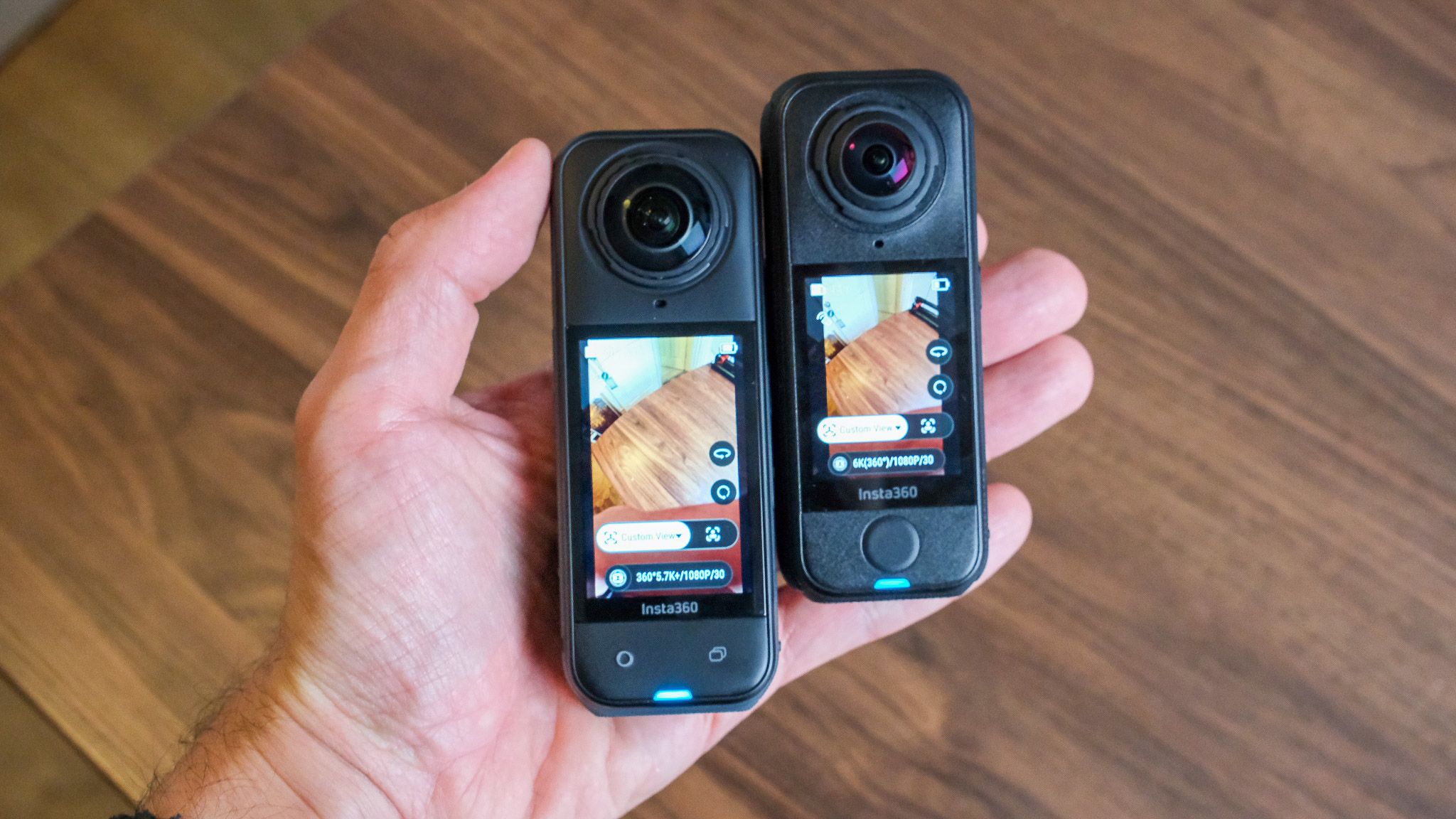
The Insta360 X5, meanwhile, comes with a 2,400 mAh removable battery that delivers roughly 100 minutes at 8K 30fps or up to three hours in 5.7K Endurance Mode.
It’s a larger, swappable unit designed for professional workflows where you might carry spares and change batteries mid-shoot. The higher capacity and better cooling help sustain longer high-bitrate recording sessions without throttling or overheating.
In real-world terms, the X5 lasts longer overall and offers far more flexibility thanks to its removable design. The X4 Air still performs impressively for its size, and with fast PD charging you can easily bring it back to full power in under an hour, but it can’t quite match the staying power of the flagship.
Winner: Insta360 X5 – higher capacity, removable design, and longer endurance make it the more reliable choice for extended shoots.
Verdict
The Insta360 X5 and X4 Air share the same creative DNA but serve very different users. The X5 is the flagship, with larger sensors, deeper control, a bigger battery and that advanced processing platform make it the camera for professionals and serious creators who want cinematic results and long-form reliability.
It’s built to handle demanding shoots, with better dynamic range, richer colour, stronger low-light performance and a body that feels purpose-built for work.
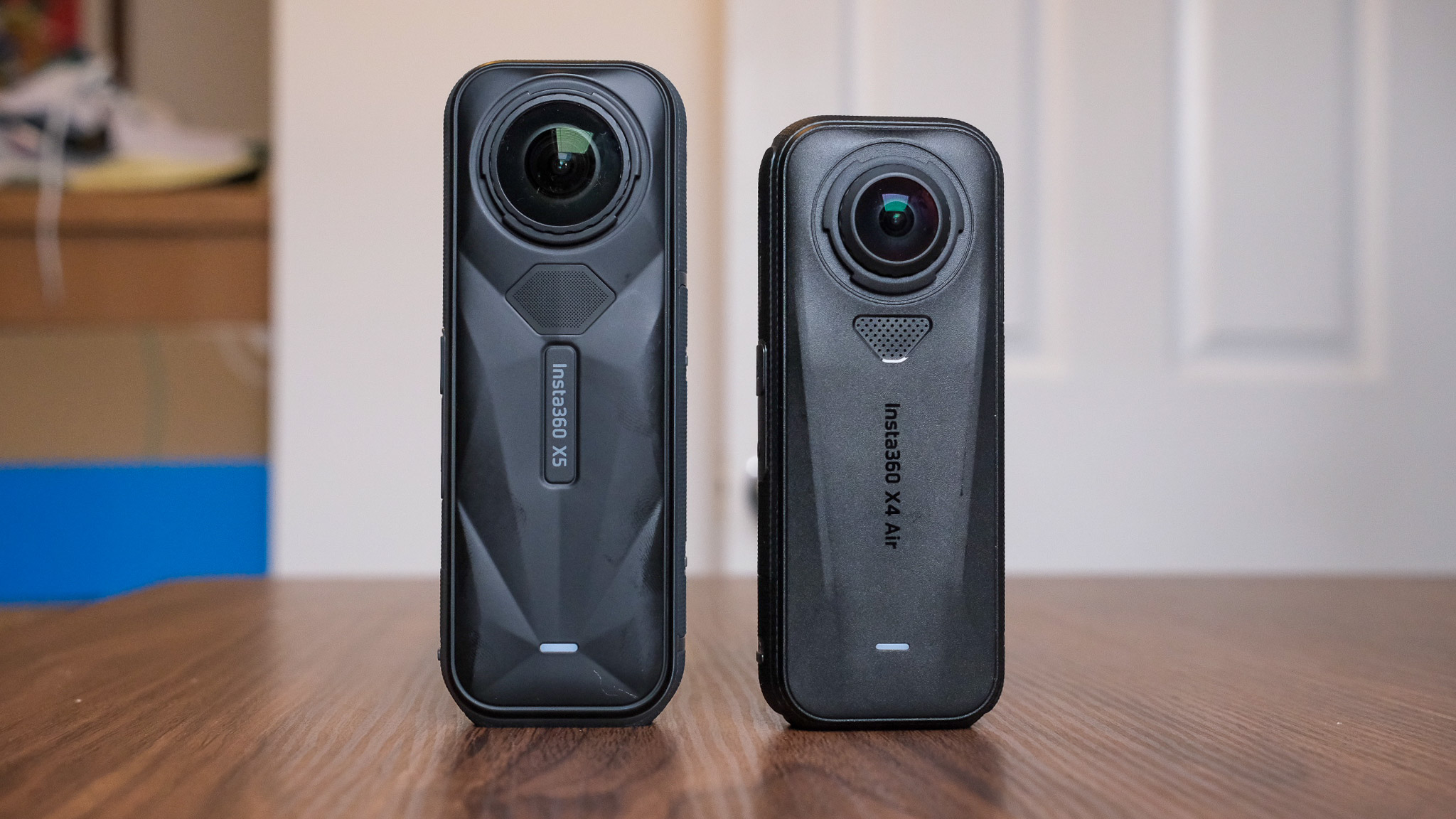
The X4 Air, however, is a more approachable evolution of Insta360’s 8K formula. It borrows many of the X5’s best traits, such as 8K capture, replaceable lenses, wind reduction and solid stabilisation, but wraps them in a lighter, smaller body that’s easier to carry and quicker to use.
It’s the kind of camera you’ll actually take everywhere, and the results are good enough that you won’t feel like you’re compromising much by leaving the flagship at home.
If you’re a filmmaker, agency shooter or pro content creator, the X5 is the obvious choice. For travel, everyday storytelling or social-first creators, the X4 Air is arguably the smarter buy.
Overall winner: Insta360 X5 (the Insta360 X4 Air is better value, though)

Matt Kollat is a journalist and content creator who works for T3.com and its magazine counterpart as an Active Editor. His areas of expertise include wearables, drones, fitness equipment, nutrition and outdoor gear. He joined T3 in 2019. His byline appears in several publications, including Techradar and Fit&Well, and more. Matt also collaborated with other content creators (e.g. Garage Gym Reviews) and judged many awards, such as the European Specialist Sports Nutrition Alliance's ESSNawards. When he isn't working out, running or cycling, you'll find him roaming the countryside and trying out new podcasting and content creation equipment.
You must confirm your public display name before commenting
Please logout and then login again, you will then be prompted to enter your display name.